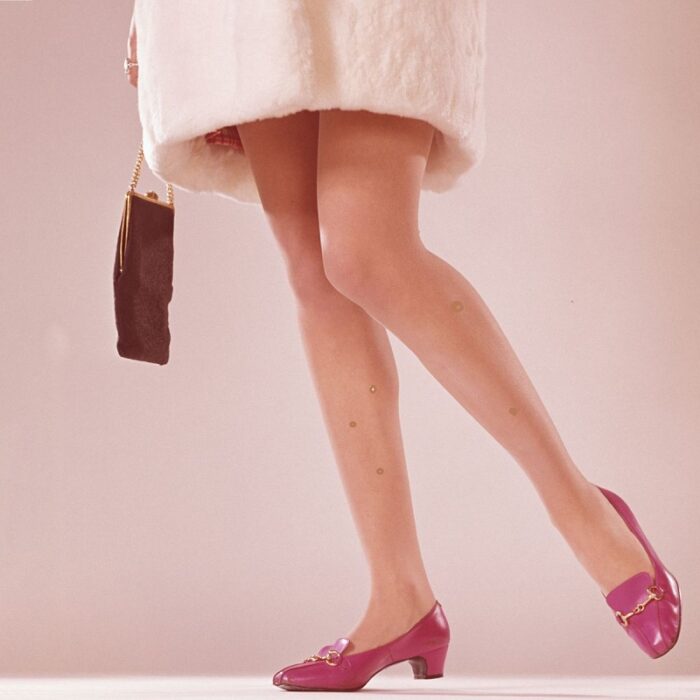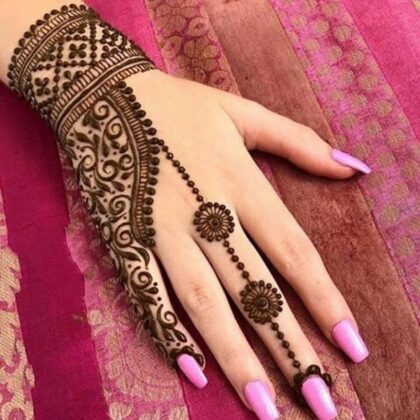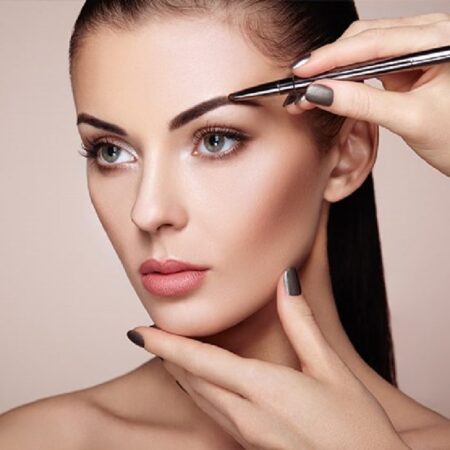
If you are concerned about the dark spots on the legs, we have the solution for you. You can get dark spots or hyperpigmentation on any body part. However, that should not stop you from flaunting your shortest shorts during the summers. It is because you can easily get rid of the spots with the right treatment and proper skin care.
Scroll through this article to understand why you develop dark spots on your legs, how you can prevent them, and treatment options.
In This Article
- What Causes Dark Spots On The Legs?
- How To Treat Dark Spots On The Legs: DIY Remedies And Professional Treatment
- Professional Treatments
- How To Prevent Dark Spots On The Legs
- Why Does My Ankle Look Darker Than My Legs?
- Why Are My Knees Discolored?
What Causes Dark Spots On The Legs?
You can develop hyperpigmentation or dark spots on your legs for various reasons:
1. Excessive Sun Exposure
Dark spots typically occur due to excessive sun exposure and UV damage. The UV rays trigger your skin to produce melanin to protect itself from them. However, some areas may produce excess melanin, making them appear darker than the surrounding skin. Prolonged sun exposure can also lead to sunspots and skin cancer.
2. Shaving Improperly
Improper shaving techniques can cause tiny black spots on the legs, also known as strawberry skin. This is different from hyperpigmentation and occurs in a pattern that closely matches the skin pores and hair follicles.
This harmless skin condition is caused when you use old and dull razors, leading to ingrown hair, clogged pores, rough dark patches, and tiny bumps.
3. Melanoma
Black and brown spots on your legs can also be due to melanoma, a type of skin cancer. These spots generally develop in the lower legs and tend to change color and size. Melanoma on the skin is caused by excessive exposure to UV rays and using sunbeds for fake tanning. If you notice any changes in the dark spots on your legs, get them examined by a healthcare professional as early as possible.
4. Clogged Pores
Just like your face, the pores on your legs can get clogged with bacteria, dead skin, and sebum. Acne-prone skin, in particular, tends to produce more oil and shed cells rapidly. As a result, you will notice small black spots on your legs.
5. Folliculitis
Folliculitis is the inflammation of hair follicles caused by Staphylococcus aureus bacteria or other non-infectious factors like improper shaving, waxing, and wearing tight clothes. This leads to red and itchy acne-like bumps across your legs that gradually turn dark.
Mild folliculitis may go away on its own. However, if left untreated, the infection can cause permanent scarring and other skin issues in the long run.
6. Keratosis Pilaris
Keratosis pilaris or ‘chicken skin’ is a skin condition characterized by tiny red or brown bumps on your skin caused by excessive keratin production, which blocks the hair follicles, leading to bumps.
Although there is no cure for it yet, skin care practices like exfoliation and moisturizing can reduce the bumpy texture of your skin and improve the appearance of your legs.
7. Diabetic Dermopathy
Diabetic dermopathy is a condition in which you develop dark spots on the lower legs. These marks are also known as shin spots and are common in patients with diabetes over the age of 50. There are no definite causes of this condition. However, the spots are thought to be caused by the damaged blood vessels close to the skin layer. They tend to fade once the sugar levels are under control.
Different underlying conditions and external factors can lead to skin discoloration on the legs. If your dark spots are caused by an underlying condition, treating it may fade them. However, if they are due to external factors and improper skin care, you can try the following treatment options to get rid of them.
How To Treat Dark Spots On The Legs: DIY Remedies And Professional Treatment
If you are into DIY skin care or want to go the natural route to eliminate dark spots on your legs, you can try these recipes.
DIY Home Remedies
1. Baking Soda
Baking soda is abrasive and may help exfoliate the skin and remove dead skin cells. This can improve the appearance of black spots on your legs.
You Will Need
- 1 tablespoon of baking soda
- 1 tablespoon of water
Method
- Mix the baking soda and water to make a paste.
- Massage the affected areas with the paste for 1-2 minutes.
- Leave it on for another 2 minutes.
- Rinse off with water.
- Apply this baking soda paste every day until you see effective results.
2. Sugar And Aloe Vera Scrub
Sugar granules work as a natural scrub that can help unclog your pores and eliminate dead skin cells. On the other hand, aloe vera moisturizes the skin and can lower skin inflammation.
You Will Need
- 2-3 tablespoons of sugar
- 2 tablespoons of aloe vera gel
- 1-2 tablespoons of olive oil
Method
- Mix all the ingredients in a bowl.
- Massage the scrub onto your legs in gentle circular motions.
- Rinse with cold water after 10 minutes.
- Use the scrub 2-3 times a week.
3. Cucumber And Rose Water Scrub
Cucumber extract has skin-lightening properties and can decrease skin melanin content. It also hydrates and soothes irritated skin. Rose water can help maintain overall skin health.
You Will Need
- 1 cup of grated cucumber
- 4 tablespoons of rose water
- 2-3 drops of olive or coconut oil
Method
- Mix the ingredients to make a paste.
- Apply it to the dark spots and massage for 10 minutes.
- Rinse the paste off with water.
- Apply a moisturizer afterward.
- Use the scrub once every day.
Home remedies may take time to show results. If you want visible and faster results, you may consult a dermatologist and go for in-office treatments. Some of them are mentioned below.
Professional Treatments
1. Electrolysis
If your dark spots are because of ingrown hair and caused by improper shaving, tweezing, and waxing, you can go for electrolysis. In this method, an electrolysis device is used to pass electric current to disrupt hair growth. This is beneficial for those who have coarse and thick body hair.
Electrolysis is often considered the better alternative for people with darker skin tones. You may experience some stinging during the treatment and redness and swelling after you are done, but the downtime is minimal.
2. Laser Therapy
Laser treatments are useful in correcting pigmentation marks on your legs and for reducing melasma. The dermatologist may use lasers of specific wavelength, depending on the spots and your skin type. Some of the common lasers used for treating hyperpigmentation and melasma include:
- Green Light: Flashlamp-pumped pulsed dye laser (PDL) (510 nm), frequency doubled QS Nd:YAG (Q Switched Neodymium: Yttrium Aluminium Garnet-532 nm)
- Red Light: QS Ruby (694 nm), QS Alexandrite (755 nm)
- Near-Infrared: QS Nd:YAG (1064 nm)
3. Cryotherapy:
In this treatment, the spots are exposed to low temperatures (using liquid nitrogen solution) to destroy and peel the dark skin.
While these treatment options can be effective, it is better to take care of your skin to prevent dark spots on your legs in the first place. Read on for some preventive measures for spots and marks on your legs.
How To Prevent Dark Spots On The Legs
1. Shave Properly
Lubricating the skin and using a sharp and new razor is crucial to prevent razor bumps and dark spots. Use a shaving foam and shave against the direction of hair growth. Exfoliate before shaving and moisturize the skin after shaving.
2. Exfoliation
Use exfoliants and physical scrubs to unclog the pores and prevent ingrown hairs. Regular exfoliation can also speed up skin cell regeneration, improve skin texture, and keep the legs soft, smooth and clear. However, do not over-exfoliate as it may irritate your skin even more and worsen the hyperpigmentation on your legs.
3. Moisturize Frequently
Moisturizers keep your skin soft and offer some relief from dryness and inflammation after shaving and exfoliation. Use lotions rich in plant oils and shea butter and always apply them on damp skin to guarantee optimal hydration by trapping the moisture in your skin for longer.
4. Wear Sunscreen When Stepping Out
Use a broad-spectrum sunscreen on your legs and other exposed areas. Make sure to reapply your sunscreen every 40-80 minutes for maximum protection. Use a sunscreen with a minimum SPF 30 and PA ++++ rating to prevent UVA and UVB damage.
We have addressed a few queries regarding skin discoloration in the legs and ankles in the next sections. Take a look.
Why Does My Ankle Look Darker Than My Legs?
Dark spots and marks around the ankles may occur due to hemosiderin staining or chronic venous insufficiency. This occurs when blood leaks from the capillaries and pools under the skin, leaving a hemoglobin residue that accumulates in the tissues. Over time, the spot may appear darker than the surrounding skin and turn black.
If you notice reddish-brown spots on your ankles, along with swelling or aches, consult your physician immediately.
Why Are My Knees Discolored?
Hyperpigmentation on the knees results from friction, which triggers melanin production in the area. It may also be caused by excessive UV rays exposure and clogged skin pores around the knees.
Regular exfoliation and a broad-spectrum sunblock can help eliminate discoloration in the knees. In some cases, your dermatologist may prescribe hydrocortisone creams to reduce the darkening.
In Closing
A proper skin care routine and sun protection can help you prevent dark spots on the legs. In addition, regular exfoliating and moisturizing can prevent environmental damage and keep your legs softer and radiant. Brown or black spots on the legs are rarely harmful. However, if the spots change color, bleed, or increase in size, or if you experience pain or swelling, seek immediate medical attention.
Key Takeaways
- Dark spots on the legs appear due to excessive sun exposure, incorrect shaving practices, clogged pores, and underlying medical conditions.
- Home remedies containing baking soda, sugar, aloe vera, cucumber, and rose water, may treat this issue.
- You can also try professional treatments such as electrolysis, laser therapy, and cryotherapy.
- Shaving properly, exfoliating and moisturizing your skin, and applying sunscreen can prevent this issue.



























